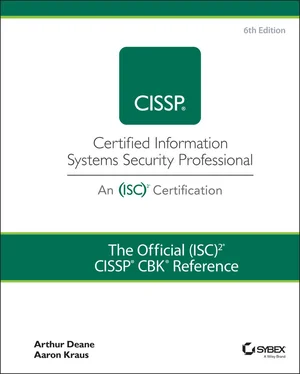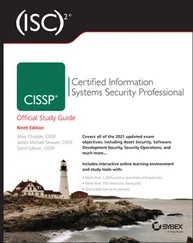The Process for Attack Simulation and Threat Analysis (PASTA) is a risk-based threat model, developed in 2012, that supports dynamic threat analysis. The PASTA methodology integrates business objectives with technical requirements, making the output more easily understood by upper management.
There are seven stages of the PASTA methodology:
Define objectives
Define technical scope
Application decomposition
Threat analysis
Vulnerability analysis
Attack enumeration
Risk and impact analysis
NIST 800-154, “Guide to Data-Centric System Threat Modeling,” was released in draft form in 2016. It explicitly rejects that best-practice approaches are sufficient to protect sensitive information, as best practice is too general and often overlooks controls specifically tailored to meet the protection of the sensitive asset. NIST 800-154 establishes four major steps for data-centric system threat modeling:
1 Identify and characterize the system and data of interest.
2 Identify and select the attack vectors to be included in the model.
3 Characterize the security controls for mitigating the attack vectors.
4 Analyze the threat model.
DREAD is an older threat modeling technique, previously used by Microsoft but later abandoned. DREAD provides a mnemonic for quantitative risk rating security threats using five categories:
Damage
Reproducibility
Exploitability
Affected users
Discoverability
Though it is sparsely used today, you should be familiar with the DREAD mnemonic and the categories that it represents.
Other threat modeling methodologies include the following:
Operationally Critical Threat, Asset, and Vulnerability Evaluation (OCTAVE) is an approach for managing information security risks, developed at the Software Engineering Institute (SEI).
Trike is an open-source threat modeling approach and tool that focuses on using threat models as a risk management tool.
Construct a platform for Risk Analysis of Security Critical Systems (CORAS), also open source, is a European project that relies heavily on Unified Modeling Language (UML) as the front end for visualizing the threats.
Visual, Agile, and Simple Threat Modeling (VAST) is a proprietary approach that leverages Agile concepts.
Implementing a structured threat modeling program allows an organization to consistently identify and characterize the threats it faces and then apply appropriate control to the risks associated with those threats.
APPLY SUPPLY CHAIN RISK MANAGEMENT CONCEPTS
The interconnected nature of today's information systems places a high degree of reliance on the confidentiality, integrity, and availability of systems from multiple vendors spread across the globe. This ecosystem has been shown to be vulnerable to both accidental and intentional disruption and compromise. Securing your organization's assets requires that you evaluate the security risk of your entire supply chain and that you apply appropriate controls to manage that risk.
Risks Associated with Hardware, Software, and Services
Any time an organization considers using third-party hardware, software, or services, the organization must determine how the new hardware, software, or services may fit into the organization's existing environment, and evaluate how the additions may impact the organization's overall security posture. For example, if your organization considers using a public cloud provider, there may be compliance risks if the CSP stores data outside of your country, or other security risks if the CSP does not meet data security requirements that you are legally or contractually required to meet.
 Malicious Code in the Supply Chain
Malicious Code in the Supply Chain
The widespread use of proprietary commercial off-the-shelf (COTS) software requires customers to trust the security practices of the vendors. However, many instances have been documented where that trust has been abused, and the COTS vendors become a vehicle to introduce vulnerabilities or compromise the CIA aspects of the customers' data.
This method has become increasingly popular for malware authors precisely because the updates are from a trusted source. In 2017, the developer of the antivirus product CCleaner distributed a routine update to its users that contained a remote-access Trojan. As the malicious software had been inserted into the code before it was signed, the entire update package was seen by most users as a legitimate update. More than 2 billion downloads of the compromised software were reported.
 SolarWinds and the SUNBURST Attack
SolarWinds and the SUNBURST Attack
One of the largest supply chain attacks in history became public in 2020 when FireEye disclosed a global attack, now known as the SUNBURST attack. SUNBURST is a vulnerability within the SolarWinds Orion Platform, which, if present and activated, allows an attacker to compromise the server on which the Orion product is running.
This widespread attack is particularly concerning because it impacted a SolarWinds product that is used for IT monitoring and management. What should be used to keep an eye on IT infrastructures ironically became the instrument of harm to those infrastructures.
With the SolarWinds Orion product being used by companies around the globe, large and small, this is a devasting example of how important supply chain management is. The victims of the SUNBURST attack include sophisticated tech companies, like Microsoft and Intel, numerous U.S. government agencies, and even the top-tier cybersecurity firm, FireEye (who initially disclosed the breach). In all, SolarWinds estimates that approximately 18,000 firms were affected around the world.
Third-Party Assessment and Monitoring
To minimize supply chain risk, appropriate controls must be applied to verify the security practices of all involved parties. In most cases, controls have been identified that would address security risks; the toughest challenge is to ensure that third parties actually do what they should to protect your organization's information from those risks.
Any organization that does business with contractors, vendors, or any other third parties should have a third-party risk management policy that establishes a third-party risk management program responsible for assessing, monitoring, and controlling risks associated with outsourcing to third parties. Governance and oversight activities should include onsite security surveys, formal security audits of third-party systems, and penetration testing, where feasible. Any new third party should be assessed against your organization's security requirements, and gaps should be documented and closely monitored. Further, vendors and other third parties should be regularly reassessed and continuously monitored to ensure that they continue to adequately protect your organization's information. We cover audits, audit standards, and other related concepts in detail in Chapter 6.
Minimum Security Requirements
Similar to baselines and standards (discussed earlier in this chapter), your organization should establish minimum security requirements (MSRs) that define the least acceptable security standards that vendors and other parties in your supply chain must satisfy. Of course, you should strive to ensure that your third parties have the strongest possible security postures, but MSRs, as the name suggests, describe the lowest level of security that your organization is willing to accept from a third party. To avoid issues, your MSRs should take into consideration any legal, contractual, or regulatory requirements that you are required to satisfy; you should not establish an MSR that is below any external security compliance requirement. You must also be prepared to audit and assess third parties' compliance with any MSRs that you have established and communicated.
Читать дальше

 Malicious Code in the Supply Chain
Malicious Code in the Supply Chain










